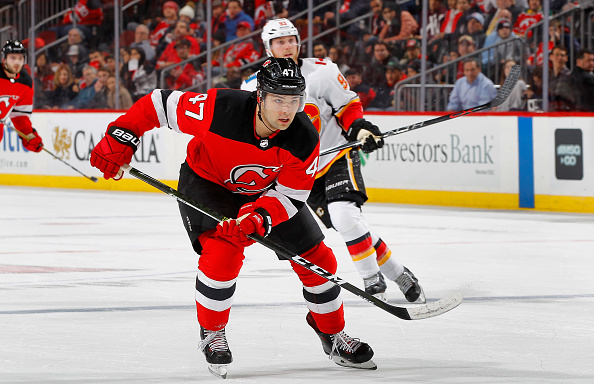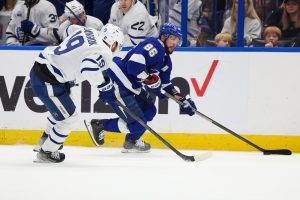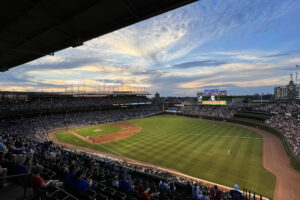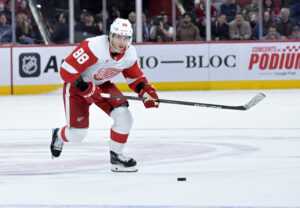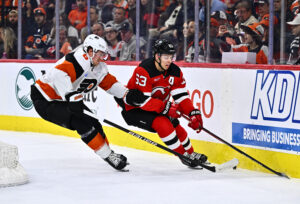NHL player development seems to always result in more questions than answers. How likely is it for a top pick to pan out? What makes a player a “steal”? Last Word On Hockey will be starting a new series on how to properly develop prospects from all different spots throughout the draft. This week’s piece involves draft picks in the back-half of the first round and how they were used early in their careers.
NHL Player Development Of First-Round Picks
In the span of 2005 through 2015, there were 84 total selections made between 16th overall and 30th overall on forwards playing in North America. Looking at all 84 forwards, they were split into different categories. Those categories were “Forwards Deemed NHL-Ready and Brought In Immediately When Ready,” “Forwards Near NHL-Ready and Brought In Immediately When Near-Ready,” “Forwards Rushed Slightly,” “Forwards Rushed,” “Forwards Forced,” “A Little Patience,” “Patience,” and “Too Much Patience.”
There were 10 forwards who fell into the fifth category, “a little patience,” on the list. Of those 10 players, three made their NHL impacts in their DY+5 seasons. Those players were John Quenneville, Matt Puempel and Phillip Danault. In this piece, we will look at Quenneville.
In this piece, we will be using stats from eliteprospects (raw stats) and hockey-reference (ice time). Additionally, the analytics we are using are as follows: even-strength offence goals above replacement (EVO), even-strength defence goals above replacement (EVD), wins above replacement (WAR) and goals above replacement (GAR). Those analytics are from evolving-hockey (subscription required).
NHL Player Development Of John Quenneville
John Quenneville, drafted 30th overall in the 2014 NHL draft by the New Jersey Devils, came out of the Brandon Wheat Kings of the WHL. In his DY-1 season, he scored eight goals and 11 assists for 19 points in 47 games for 0.404 points per game. That ranked 71st out of the aforementioned 84 forwards in DY-1 production. The following season, he scored 25 goals and 33 assists for 58 points in 61 games, for 0.951 points per game. That ranked 67th out of those same 84 forwards, in DY production. After being drafted, Quenneville would play two more seasons in the WHL and two AHL seasons, before making the jump to the NHL.
In his DY+1 season, Quenneville scored 17 goals and 30 assists for 47 points in 57 games, for 0.825 points per game. That ranked 55th out of the 82 forwards still outside the NHL in DY+1 production. In his final WHL season, Quenneville scored 31 goals and 42 assists for 73 points in 57 games, for 1.281 points per game. That ranked 14th out of the 70 forwards still outside the NHL in DY+2 production. Quenneville would make the jump to the AHL following this season.
AHL Time For John Quenneville
Quenneville, now playing in the AHL with the Albany Devils (Devils affiliates), went on to score 14 goals and 32 assists for 46 points in 58 games, for 0.793 points per game. That ranked ninth out of the 46 forwards still outside the NHL in DY+3 production. In his second AHL season, Quenneville would play 43 games, scoring 14 goals and 20 assists for 34 points, for 0.791 points per game. That ranked fifth out of the 31 forwards still outside the NHL in DY+4 production.
How Quenneville Was Used
Four years after being drafted, Quenneville would get his first extended look in the NHL (15+ games). That year, in 2018-19, he would still see mostly AHL minutes. Playing in 37 AHL games, he scored 39 points, his first point per game or better season at that level in his career. At the NHL level, he would play 19 games, averaging 11:19 time on ice per game. With the limited role, he scored just one goal. Analytically, he was unimpressive. His EVO (-0.2) and EVD (-0.3) were both below replacement level. Additionally, his WAR (-0.2) and GAR (-0.9) were also below replacement level. Not a very inspiring performance for a guy who has already spent four years outside the NHL after being drafted, with just one season over a point per game at any level under his belt prior.
The following season, Quenneville would see 36 AHL games, and score 22 points, a step down from the year prior. With that, he saw less NHL time, playing just nine games and averaging a measly 11:03 per game. In the very small sample, his analytics improved. His EVO (1.3) was the most improved, while his EVD (-1.2) took a step back. But overall, his WAR (0.0) and GAR (0.2) were at or above replacement level. Not inspiring, but still an improvement, albeit in a small grouping of games.
John Quenneville Never Takes Next Step In Development
After that season, Quenneville would not see the NHL again. Playing only 16 AHL games that season (2020-21), he would score just two points. That would mark the end of Quenneville’s North American hockey journey.
In 2021-22, he played with the ZSC Lions in the NL (Switzerland), where he scored 37 goals in 46 games. This season, he made the move to the SHL (Sweden), playing for Leksands IF. Thus far, he has scored 12 points in 16 games.
John Quenneville Was Not A Good Draft Choice
He took until his DY+5 season before he made an impact. In the WHL, he had just one single season over a point per game. Then, in the AHL, he had just one season over a point per game, and it was in a season that he barely played at that level (37 games). All-in-all, a wholly uninspiring career pre-NHL. Sure, he was not given a chance, but he also never proved he deserved one. Meanwhile, Ivan Barbashev was taken three selections later. Barbashev was at nearly a 1.5-point pace per game in his DY season in the QMJHL. He then followed up the next season with over a 1.5-point pace. He made his first extended NHL look in his DY+3 season. Barbashev has 158 career points in 370 total games played at the NHL level with the St. Louis Blues.
Additionally, three notable goalies were selected in the second-round, one of which Devils fans know a lot about. Those goalies were Thatcher Demko (Vancouver Canucks), Alex Nedljkovic (Carolina Hurricanes), and Vitek Vanacek (Washington Capitals). While the Devils did not select a goalie in this draft, and were not apparently in search of a goalie, it’s clear that their original selection of Quenneville was simply not the right choice. Other notables taken after him were Brendan Lemieux, Nicolas Aube-Kubel, Brandon Montour and Ryan Donato.
Junior league stats via Elite Prospects, NHL stats via Hockey Reference, NHL analytics via Evolving Hockey


